Part 2 from Real Wine 2024, five more producers, and as I’m way late with this, let’s crack on…
NATALIA & PHIL HARRIS (Sussex, England)
Okay, so technically these wines are billed as “Natalia Harris” but I’m going to give Phil, Natalia’s husband, billing. This is partly because I know nothing about Natalia but I do know Phil graduated with an oenology degree from Plumpton, has worked for Olivier Humbrecht in Alsace and as a vineyard manager at Davenport, and is a three-time UK pruning champion.
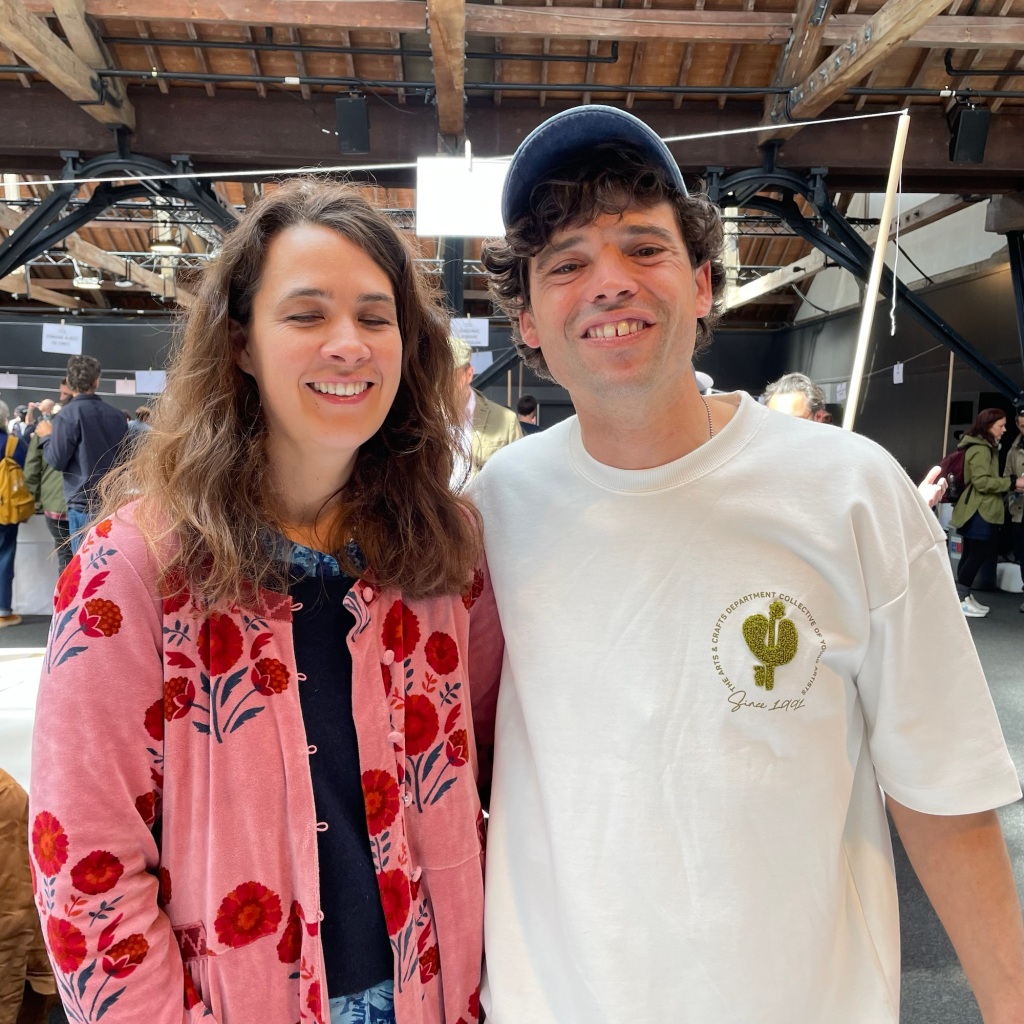
This very nice couple have a vineyard on their farm at Westfield, near Hastings, where they also have sheep and rams. Two-hectares of Ortega, Chardonnay, Bacchus and Pinot Noir were planted in 2019. Certified organic, their philosophy goes much further, including a no-till regime, mowing and weeding being carried out by the sheep. Will Davenport helps supervise the winemaking.
The first vintage here made just 800 bottles of an Ortega/Bacchus blend, the other two varieties being destined at present for a traditional method sparkling wine. Bottled at Davenport’s winery in East Sussex (soon to move to Kent according to Henry Jeffreys), I tasted one of the few remaining bottles and it was exceptional. Aromatic, fresh and fruity. Hopefully the 2023 may yield double the number of bottles.
I noticed that even though this couple have not made the recent books on English Wine, there is a glowing quote from Jancis Robinson on their web site. JR doesn’t often come up when we talk about English still wine from a small artisan operation. Well, her palate is not wrong. This is also an example of something Les Caves de Pyrene seem to be doing more and more of (Doug Wregg’s influence, perhaps?). That is championing small, home-grown, artisan talent. They did it with Ben Walgate and Tim Phillips, and before that with Ancre Hill. It is much to be encouraged. I’m always saying that it’s the outliers who drive the change that will become the normal in a decade’s time.

Wonder how they got Quentin Blake to design the label? Nice.
BEN WALGATE (Sussex, England)
As for Ben, well he was here too (as was Tim, but at the time cleaned out of wine he wasn’t pouring). Since I last wrote about Ben he has parted ways with Tillingham and is making negoce wine (since April 2023) in premises in the middle of Rye, one of the South Coast’s most beautiful small towns (well worth a visit, I can assure you, if you want to go and seek out Mr Walgate).
Walgate & Co is now the name to look for. Ben brought his 2022 wines in bottle from Tillingham when he moved, and he made wine from 15 tons of grapes at the new winery from the ’23 vintage. He’s fermenting in fibreglass (same tank supplier as Daniel Ham), and I believe that vintage yielded 22,000 bottles spread over nine wines.
I tried five of them (and bought one to bring home…I love his Meunier). The sparkling Blanc de Noirs is a 50-50 blend of Pinots Noir and Meunier, I think from the 2019 vintage. It’s generous and vivacious. Dosed at 20g/l and bottled at a slightly lower “5-bar pressure”, its classical method combines with just a little bit of “difference” you will enjoy.

Cuvée M 2022 (M is for Maggie) is a blend of several varieties including Ortega and MT, very aromatic, a little skin contact, mineral (chalky), citrus, spice and a hint of bitter marmalade.
Rosé 2022 is Meunier matured in a German Füder. Big on cherry aromatics, a wine pressed after three weeks resulting in an elegant juice which has proved so amazingly popular. Very wide appeal for this.
Meunier 2022 (the one I grabbed from the shop) actually contains 20% Pinot Noir. Mostly fermented in concrete, it has that lovely dusty strawberry juice quality that singles out other good Meuniers (try Max Sein Wein from Germany via Basket Press Wines). There’s a mineral texture so you get a wine that has a lightness to it but also a serious element.
Last to taste, the Pinot Noir Reserve 2022. The Reserve came from a three-barrel selection of fruit sourced in Crouch Valley, Essex (best PN in the UK…probably) and Shotley (Sussex). In fact, it is all from German “Spätburgunder” clones, very possibly a better bet for a still wine in the UK. Pressed directly into barrel, it’s all spicy red cherry. Textured now, it needs keeping a while, I think. Only 1,000 bottles made, so if you do keep some, you’ll be one of the lucky ones.
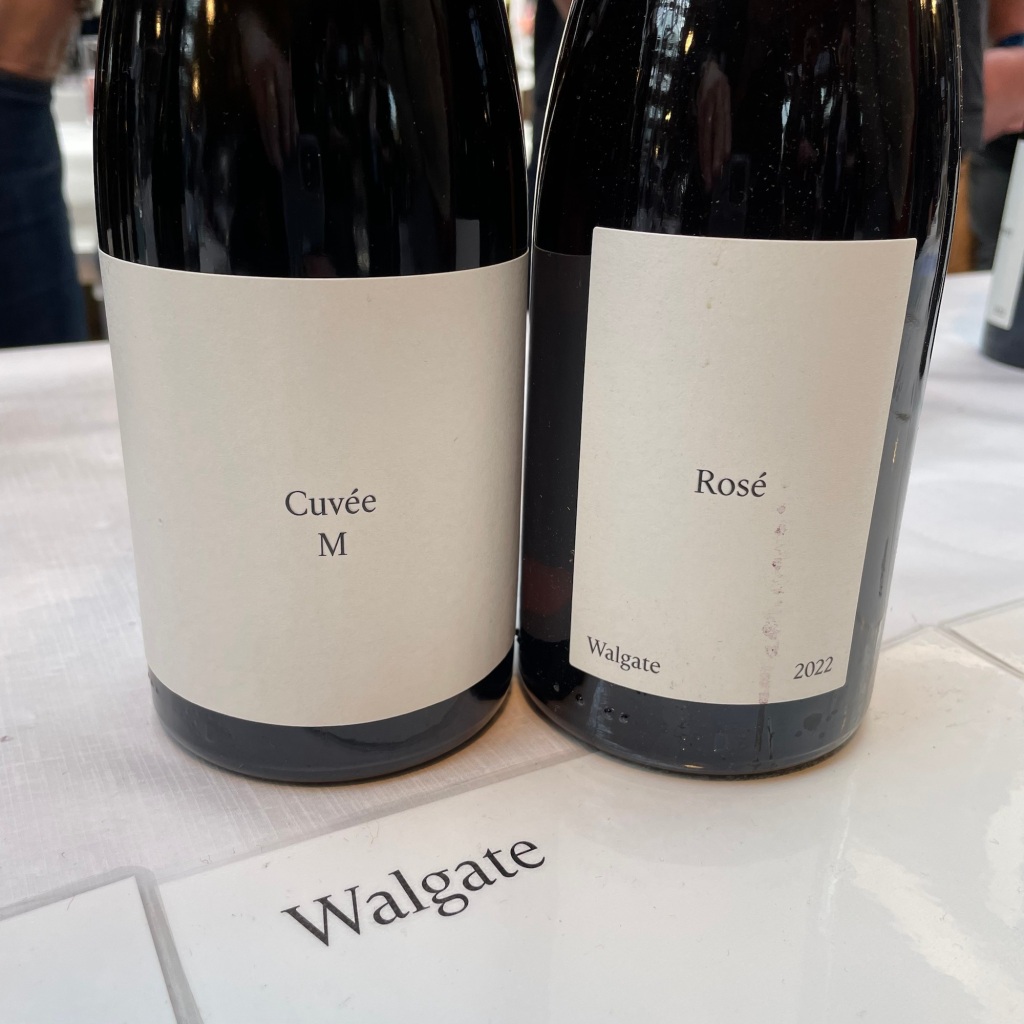
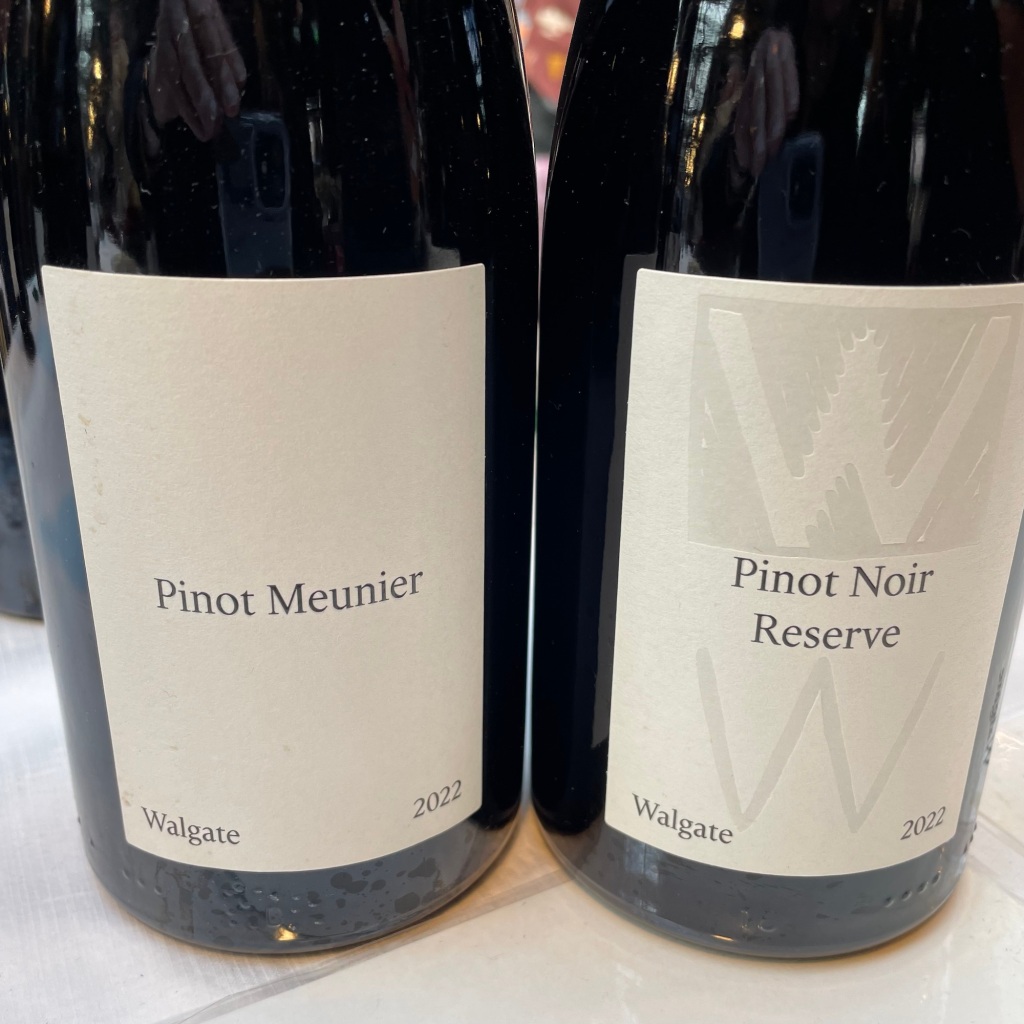

I managed to catch Ben and Tim Phillips together. They always have lots to chat about.
CASTAGNA (Beechworth, Victoria, Australia)
If Beechworth makes several of the finest wines in the whole of Australia (trust me), then the Castagna family are one of those producers. I first met Julian Castagna many years ago through Tim Phillips, and then later his sons as they became regulars at Real Wine. Adam was looking after dad at RW24.
Although I may have consumed my last bottle of Castagna this year, I am pleased to keep on top of what they are doing, albeit more expensively, today. As I said, this outpost of viticulture on the edge of the Australian Alps in NE Victoria is truly up there with the very best.
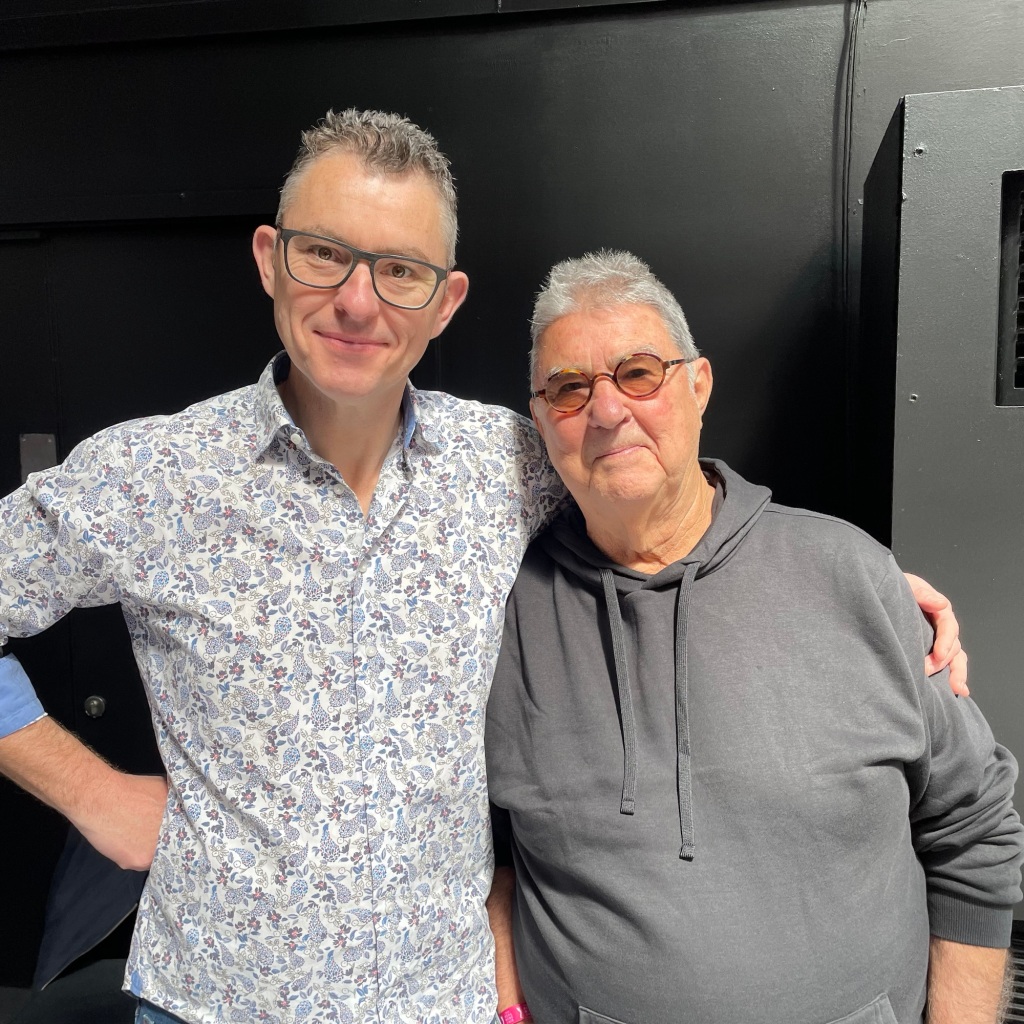

Alex and dad…plus, in case you can’t place exactly where Beechworth is.
If Castagna is best known in the red department, do not, whatever you do, ignore the Chenin. There may no longer be a Castagna Savagnin (oh how we loved it), but grab this. It comes from their own Beechworth plots. It’s not a Loire lookalike, but nor is it a stereotypical Australian (or what you might imagine one to be).
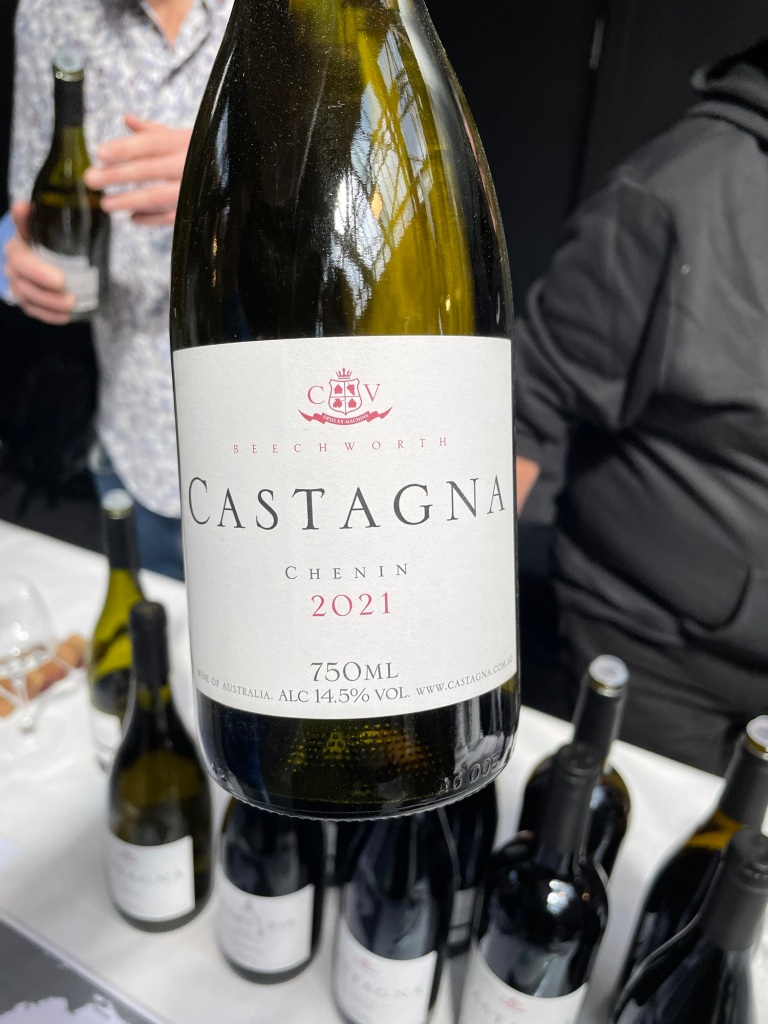
The other white is Ingénue, a 2021 Viognier. It does rock out 14% abv, yet isn’t heavy, very unlike some of the Cali-monsters I recall from the 1990s at similar levels and above. Almonds and violets, so pretty classic.
The first red is Adam’s Rib. Although this is a blend (Nebbiolo and Syrah with a little Sangiovese in 2021), it’s a wine for those (like me) who really want to explore Victorian Nebbiolo. It’s not Piemonte but it is spicy with cloves, and it is one of the less expensive Castagna reds (the pure Nebbiolo is called Barbarossa).
Un Segreto 2018 is also a blend of Syrah (40%) with Sangiovese. It’s a mid-weight, mostly cherry-fruited, red with a dusty bite which is echoed in its slightly ferrous bouquet. If you want 100% Sangiovese, go for La Chiave 2018. This has the vibrancy of fruit grown in a cooler region than you might suppose Beechworth is, and whilst it is very much an original, it is also grounded in the essence of Toscana.

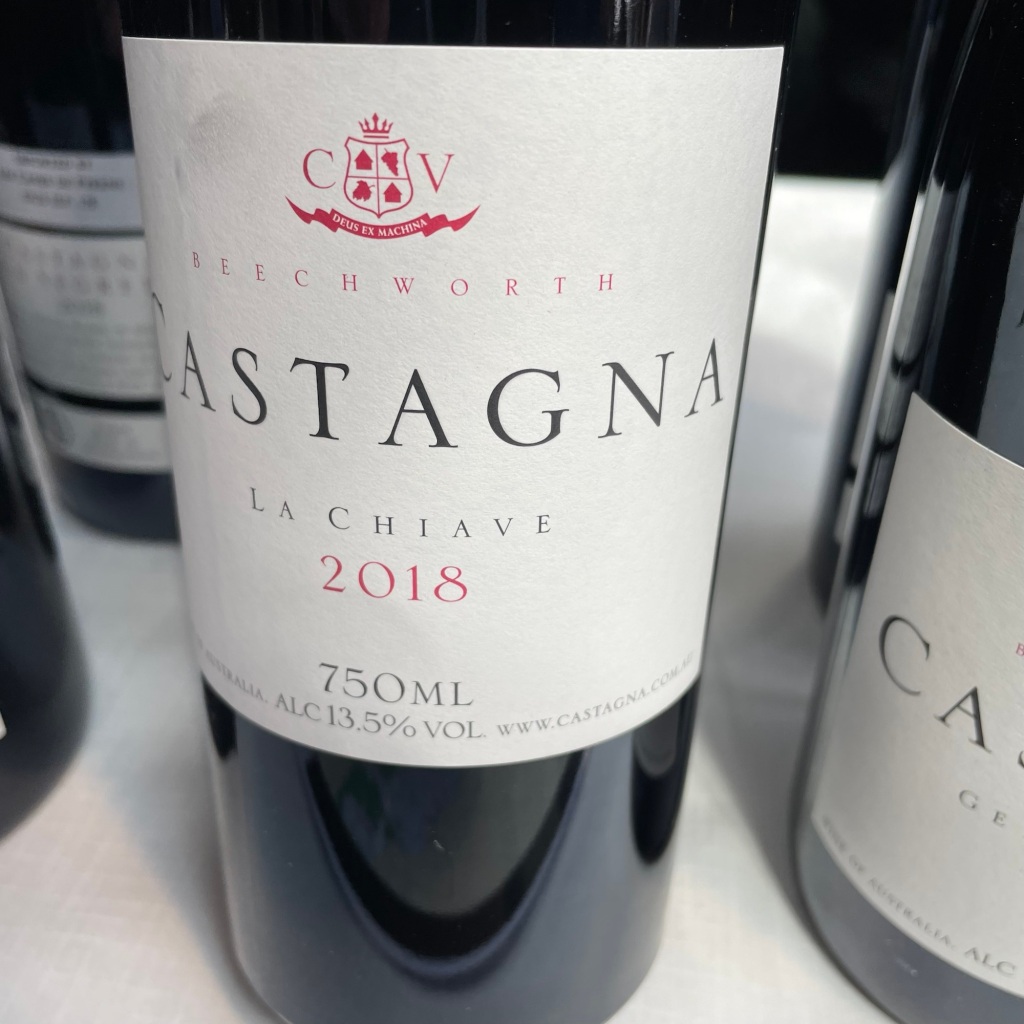
Genesis Syrah was the first Castagna wine I drank. Those who know me will know I have praised certain Aussie Shizzas to the heavens, but this is my favourite (and labelled very firmly Syrah, not Shiraz), albeit a subjective and personal statement to make. It is Deep and brooding, yet equally as fresh as you can imagine. It is seasoned with 2% Viognier (like the best). It may not seem much, but like a good chef, an alchemist winemaker knows its worth. If you don’t believe me, check out what the big-name Aussie writers have to say. You’ll find they agree. If there’s one wine from the fair you whack away for a decade-plus…
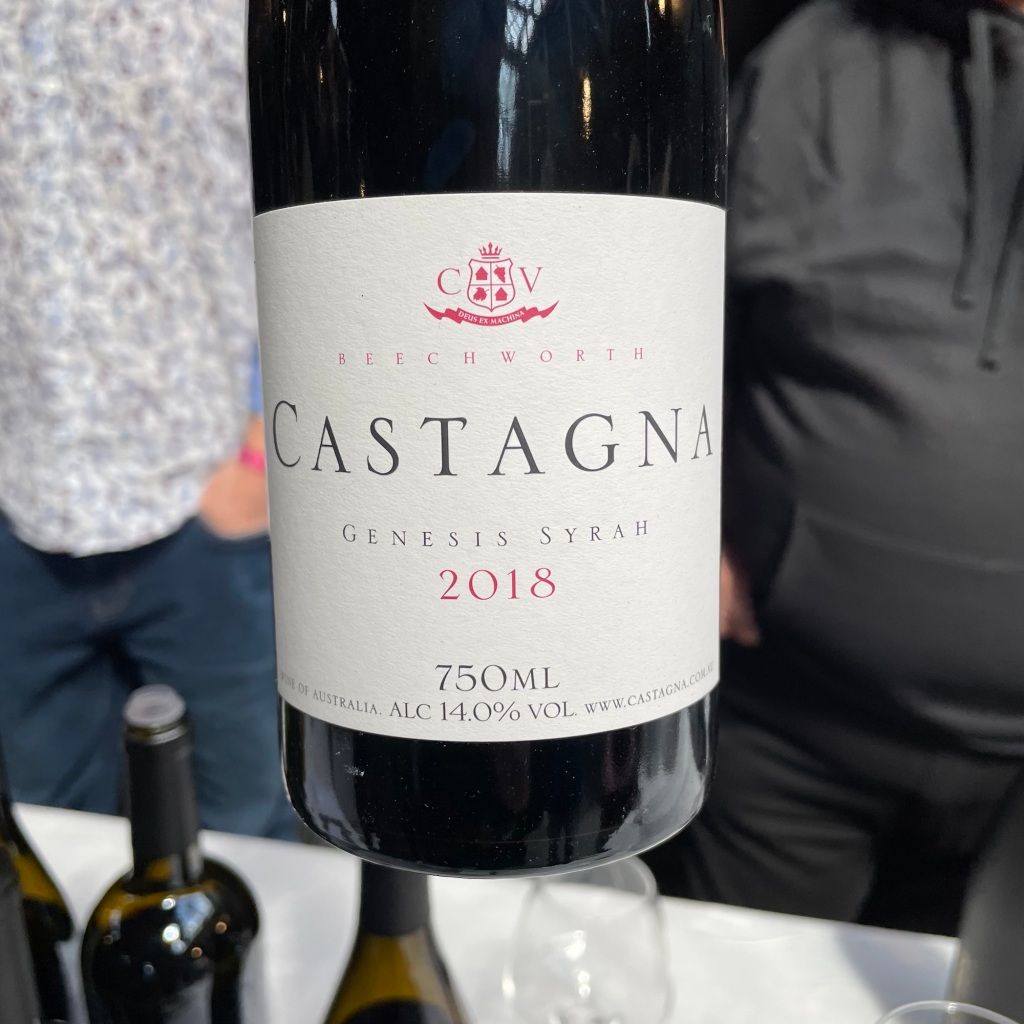
The mighty Genesis!
JAUMA WINES (South Australia)
James Erskine’s Jauma wines were in that first wave of Australian Natural wines to hit our shores all those years back. His wines have not gone away, and in fact they are better than ever. The label for these small batch wines was created in 2010 when Erskine ditched a career as one of Australia’s most lauded sommeliers to make wine in McLaren Vale, near Adelaide. We now have Jauma wines from the more recent hub of natural wine innovation, Adelaide Hills, as well. Cooler climate than The Vale, and perhaps more stylistically diverse.

We got to taste Chenin from the Blewitt Springs sub-appellation (“grown by Lulu”), Sauvignon Blanc “Somewhere on Another Hill” from McLaren Vale and Origins Arneis. All have their uniqueness. The SB is a maceration of destemmed fruit. The Arneis…well, proof that this variety has a bright future in Australia outside some bland Piemonte lookalikes, this being cloudy and ffffunky for you, with a so-juicy mouthfeel.

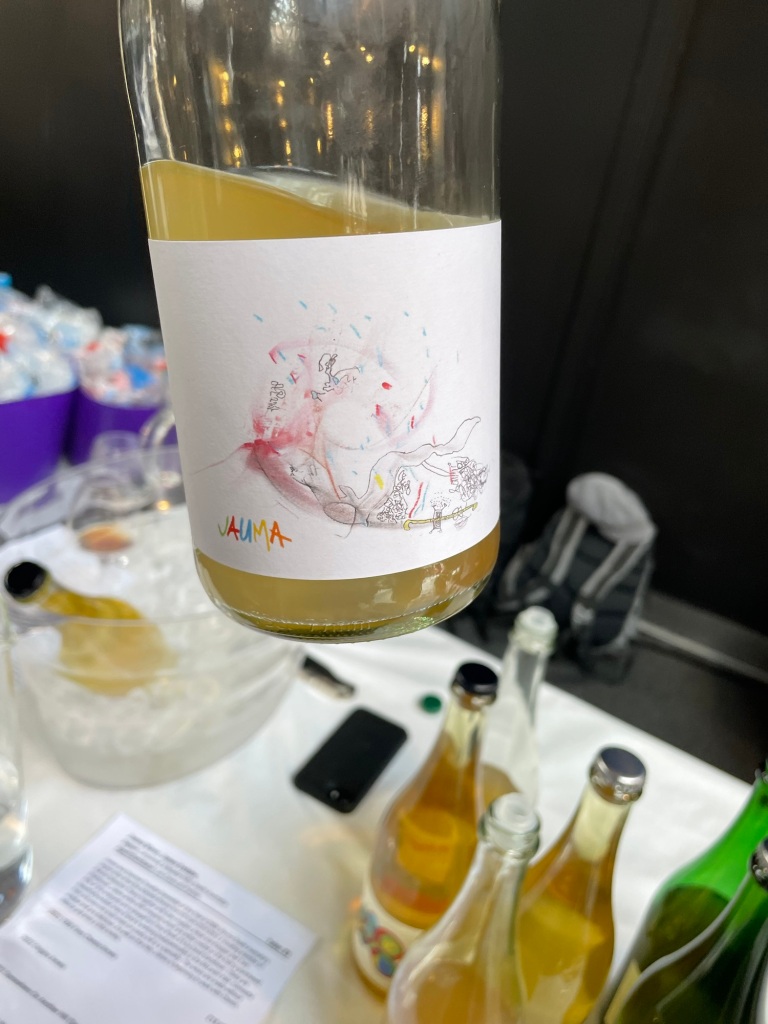

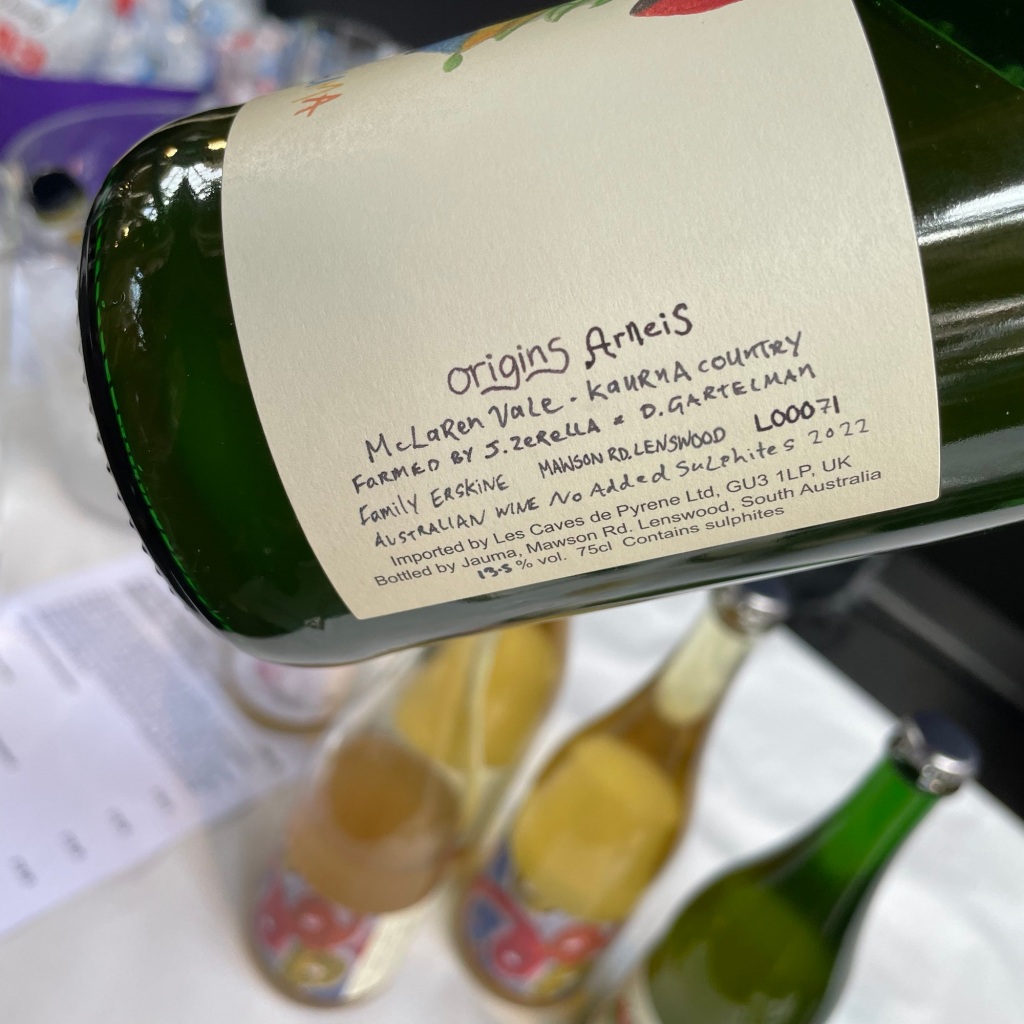

Audrey’s Fairygarten 2022 is carbonic Clarendon-sourced Shiraz. It’s bright and plump, and undoubtedly a little bit crazy. But Jauma wines are always edgy like this. They are what Jamie Goode would call “smashable”, and that is the essence of this kind of natural wine. Castagna’s Genesis Syrah is an icon, irrespective of it being a natural wine, one for the cellar. Jauma is wine to grab from the shop on the way to the beach, and no less good for that.

MAX SEIN WEIN (Baden, Germany)
I’ve long been a champion of Max Baumann’s wines so it was good to actually meet him…sort of. Real Wine is tiring for producers, especially first-timers, so I’ll forgive Max for not being as warm as most other producers, who mostly seem to remember me. Doubtless young Max thought WTH is this old guy I don’t know (don’t you agree, he does look very suspicious of me in the photo). Still, the wines I tasted were on great form, all wines I had never tried before.
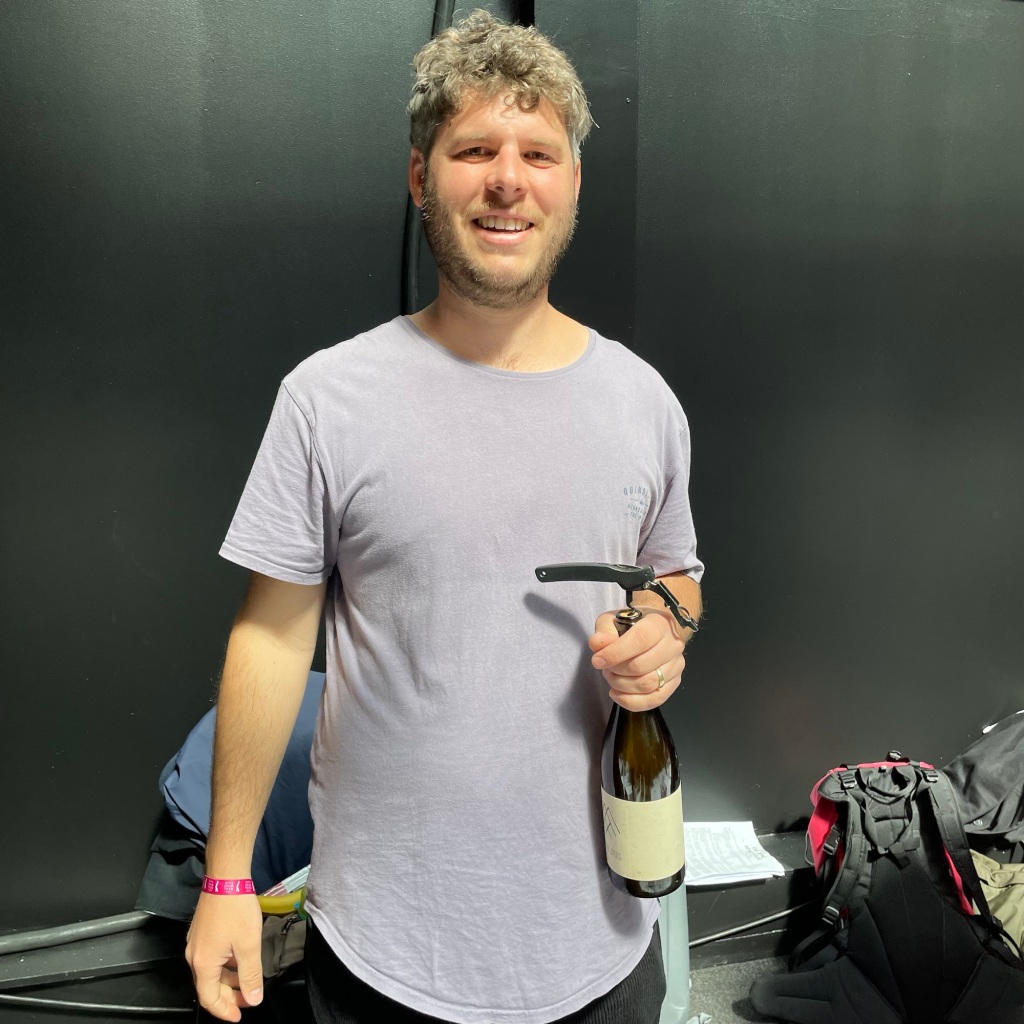
First up, Hauswein. This is now the entry level wein here, a blend of MT and Sylvaner (if Max is still spelling it the French way). It sees mostly neutral oak and it’s a very appealing easy white with great acid freshness and a trademark zingy finish.
3 Taler is a different rendition of Sylvaner, more serious. The fruit here is big, not something you can always say about the variety, and the reason why it has such an awful reputation with people who have been put off by wines of a decade or so ago. This does have the producer stamp of vivacity too though.
NB is so enigmatically named because Max labels his wines as Landwein, so he’s not allowed to tell you that the fruit comes from the 45-year-old vines of the Neuenberg. I can. It’s a direct press bottling with a little skin contact, very elegant, substantial in a way but you wouldn’t call it “big”. Possibly the kind of restraint that shows ageability. Only 12.5% abv.
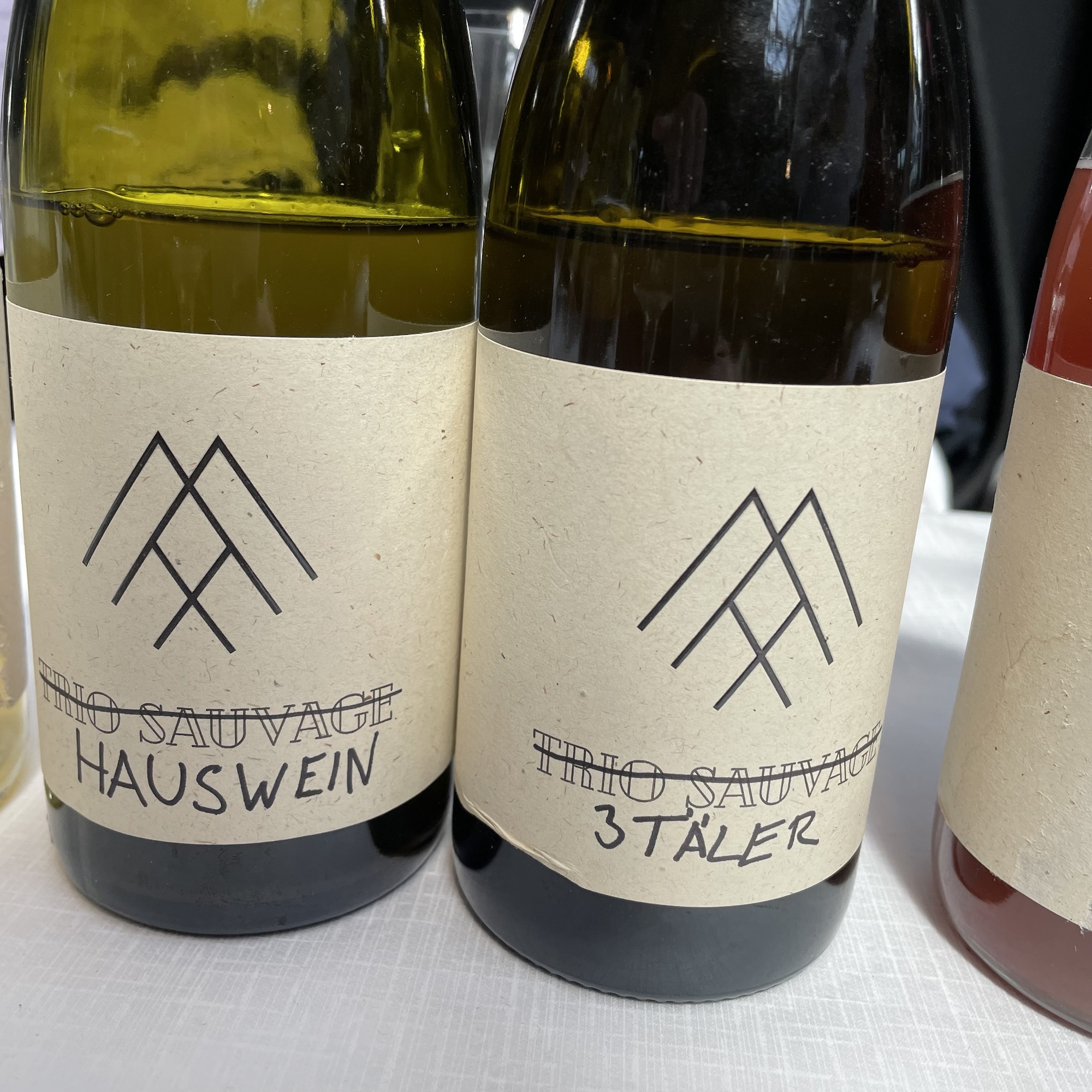
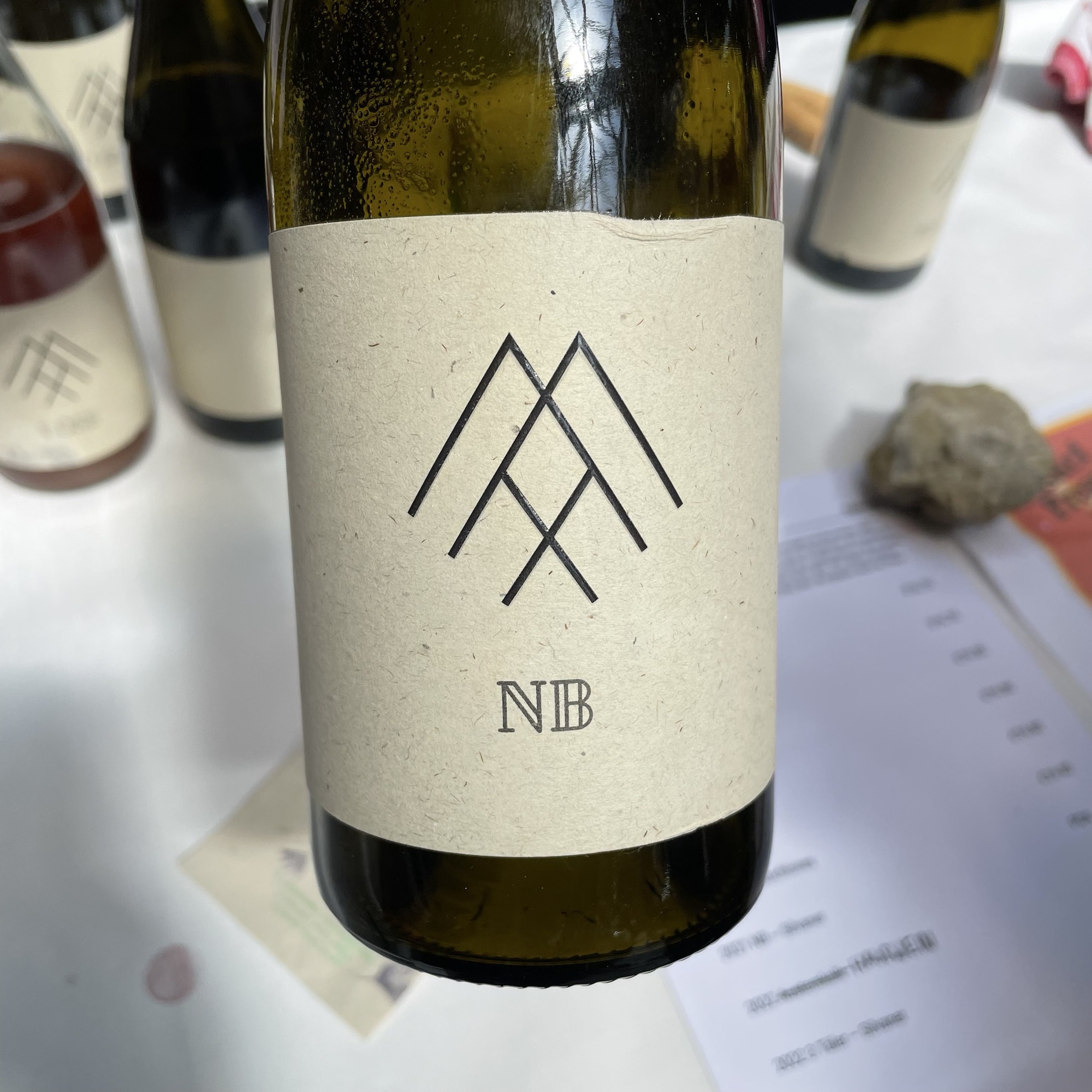
These are all excellent white wines at their different levels of seriousness, and all show how Max’s winemaking is coming on with experience and vine age. But let’s not forget, this man makes cracking red wines too, as my “Recent Wines” have revealed and will continue to do so.

Yeah, caved and got a tea towel…I know, but we did need some new ones…but I did suggest aprons next time around.

Agree about how refreshing to see CdeP championing young, artisan talent from this country and others.
I was fortunate to visit in the Adelaide Hills a few years back ( and hopefully again later this year), what a welcoming, lovely guy whose wines are excellent. There’s such a vibrant community of producers who support each other in the Hills.
LikeLiked by 1 person